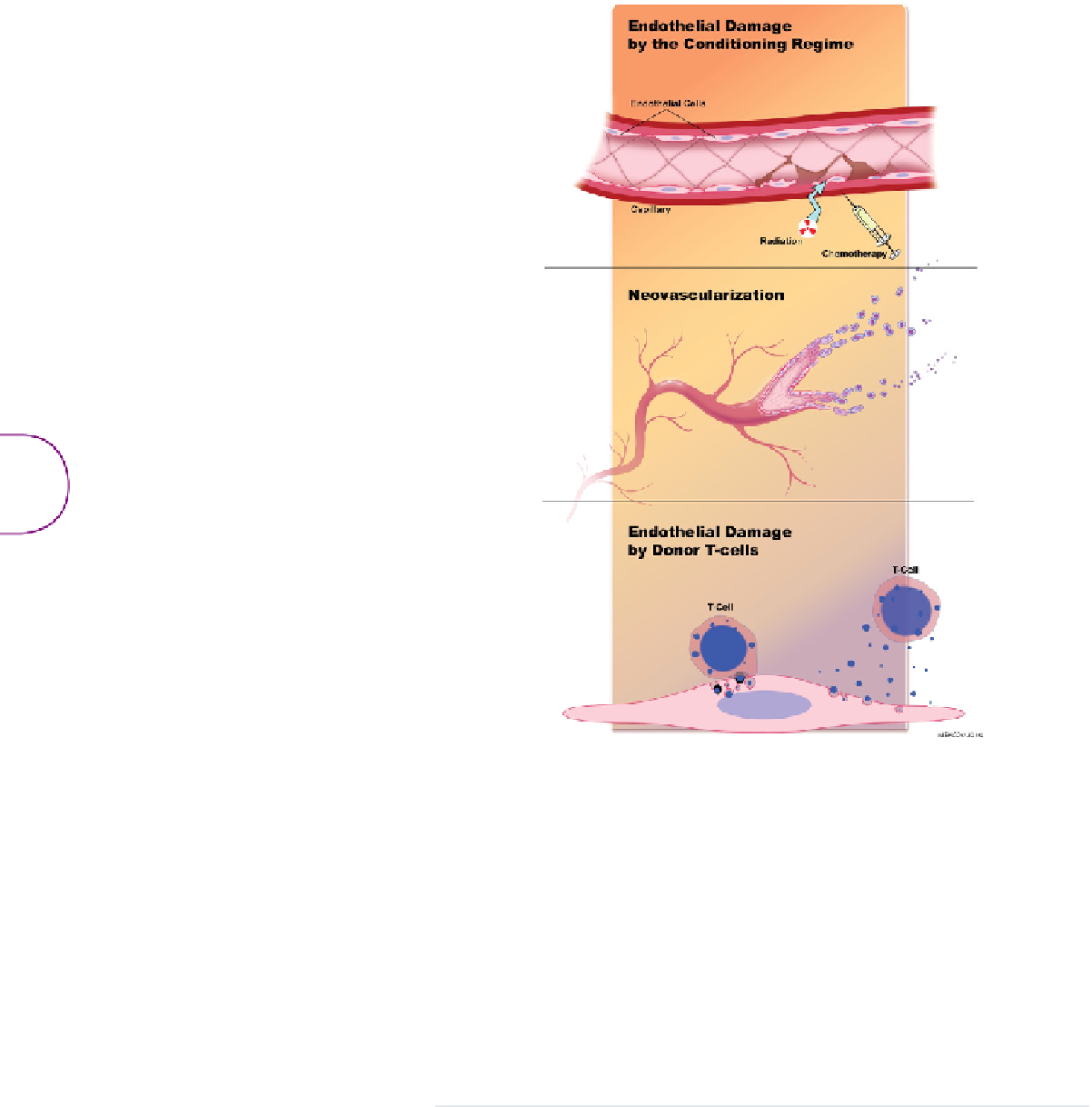Biology Reference
In-Depth Information
480
FIGURE 20.1
Role of the endothelium during GVHD. The
conditioning regime consisting of chemotherapy
and radiation damages the endothelium. During
the acute inflammatory phase neovascularization
and recruitment of inflammatory cells occur. In the
course of GVHD the endothelium and blood vessels
are destroyed by donor-derived allogeneic immune
cells.
(From: Penack O et al. Blood 2011; 117: 4181.
Designed by T. Helms (MSKCC) and O. Penack.)
endothelial activation and damage may occur prior to allo-HSCT because
of the conditioning regimen, (b) in patients with acute GVHD inflamma-
tory cells are recruited and neovascularization is induced, (c) during later
phases of GVHD alloreactive donor leukocytes attack host ECs and dam-
age the endothelium, leading to rarefaction of blood vessels in chronic
GVHD
[2]
.
Activation, targeting, and damage of ECs are not critical exclusively for the
pathophysiology of GVHD—these processes are also important mecha-
nisms during allograft rejection in solid organ transplantation. Allograft
rejection involves recruitment and activation of circulating leukocytes in
response to activated microvascular ECs
[3]
.
Endothelial dysfunction caused by the conditioning
regimen
Initial endothelial damage in multiple organs is caused by radiation and/
or chemotherapy used as a conditioning regimen
[4,5]
. Even relatively low
doses of radiation, e.g., 2 Gy, activate ECs
in vitro
and
in vivo
[6,7]
. Acti-
vation induces functional changes in ECs, such as increased expression

Search WWH ::

Custom Search